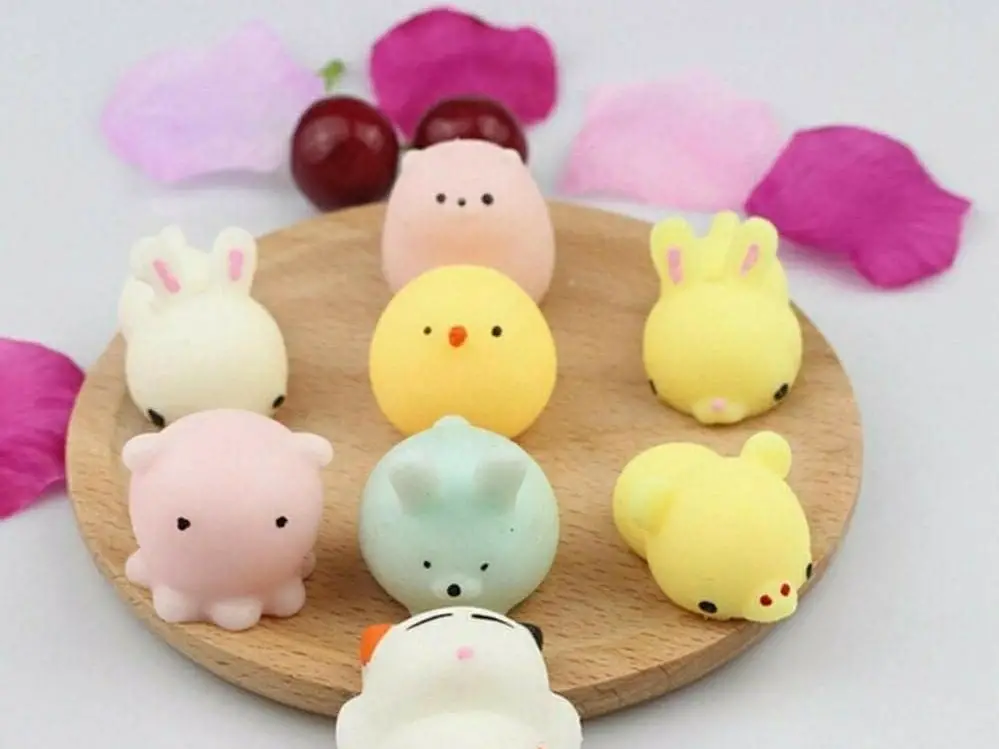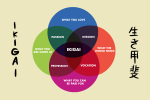Mochi squishies — small toys that can be found anywhere on the internet — have joined the legion of items advertised as reducing anxiety and stress. Not as well known as fidget spinners or kinetic sand, mochi squishies still capture the hearts of their owners with their cute shapes and adorable squishiness. Despite their seemingly mindless usage and unapparent connection to stress or anxiety reduction, mochi squishies certainly seem to get the job done. Giving it a little squeeze or watching the rounder versions of the toy jiggle around on your table is enough to make you feel just a little less stressed. But how exactly does a squishy toy, one so small that it fits just inside your closed fist, accomplish such a feat?
Part of the reason might be due to what it is made out of — silicone. The material gives the toy a soft and squishy texture — hence the name. Moreover, their cute animal shapes give off a very innocent and relaxing aura.
https://www.instagram.com/p/BnISWamA0SD/
There are many types of squishy toys out there made of different material, some of which have been deemed unsafe by certain governments around the world. Many of them are made of polyurethane (PU), but the silicone mochi squishies are nontoxic and completely safe.
Is it their cuteness that causes mochi squishies to be so good at decreasing our stress levels? Sure, cute things can lift your mood (cute animal video compilations do exist for a reason), but it can’t be the only reason mochi squishies are advertised the way they are. Fidget spinners certainly cannot be called cute. And yet they perform this very function of reducing anxiety and stress. Relegating the reason for reducing stress to just cuteness doesn’t seem fully realistic. So, if cuteness isn’t the answer (although we wish it was), what is?
Looking through the checklist of what mochi squishies can do, there doesn’t seem to be much substance. They are cute, which arguably is a huge plus, and can be squished incessantly. Perhaps you can get creative with how you squish the toy, but there’s not all that much range there. The only thing mochi squishies have in common with other stress relief toys is the mindless, repetitive nature in how you would use it.
Fidget spinners work as a sensory toy. Fiddling with it provides a gateway to release the pent-up energy from anxiety or stress onto a physical object. Stress balls work the same way. It would be better to batter a stress ball than destroy your table after all. The repeated tactile motion reduces pain, stress, anxiety and all sorts of negative emotions that just hamper daily activities. There are many small toys that provide the same feeling, like fidget cubes and kinetic sand. All these toys said to reduce stress have a tactile element that just works some kind of magic.
Seeing mochi squishies and their soft squishy bodies, it is apparent that the very act of touching the toys provides a form of comfort. And in a world where increasing numbers of people prefer touching their phones instead of enjoying a good hug, it makes sense that people would long for a tactile sensation more than ever. Science has found that simple touch is very important, especially to social creatures like humans. Monkeys and other animals have even been found to benefit from skin-to-skin contact, especially when they are young. There is a reason hugs are called therapeutic, after all.
So mochi squishies reduce stress by being a form of touch. Squishing the toy might release oxytocin, the same hormones your body releases when you hug someone. These hormones in turn reduce the level of the stress hormone norepinephrine in your body. Incredible how squishing something so small could possibly do that.
But however cute these toys are, they are not an answer to physical loneliness. The same way fidget spinners are only a mechanism for coping with anxiety and not a cure, mochi squishies cannot solve all the problems in the world (but it would be great if they could). However, it doesn’t mean they can’t be used to release some of those terrible emotion we all feel sometimes.
Perhaps mochi squishies were created for this very purpose? Or maybe not? To know that would be to chase after the creator of these adorable squishy toys. But therein lies a small problem.
Exactly where mochi squishies come from is unknown. Unlike the fidget spinner, whose creation was credited to a Catherine Hettinger, or kinetic sand, which is trademarked by Canadian toy company Spin Master Ltd., mochi squishies don’t seem to have a singular creator. Most information seems to point to Japan as its country of origin. It makes sense, seeing as many other cute or kawaii things like mochi squishies have been born there. Tracing the companies that sell mochi squishies online doesn’t yield any results either. The only things all of them have in common is that they advertise the silicone squishies as stress and anxiety-reducing.
https://www.instagram.com/p/B1pM6RyH2Pe/
But how did these sellers know that mochi squishies can do such a thing? Were they perhaps created by some genius inventor of all things cute to cater to our squishing needs?
That theory doesn’t seem to play out very well. It is more likely that mochi squishies were created just to be cute. And then someone figured out how much their stress decreased when playing with one, and slowly popularized the idea. Just like how fidget spinners were created as a toy the creator’s child could play with and not what it is used for now.
Whatever the case may be, there is no doubt that mochi squishies were a great invention. All cute things deserve to be given love in some form or another, even if one has to squish them. It’s just an added bonus that these mochi squishies have such great side-effects.
















